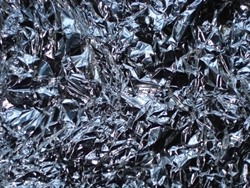later post | index | earlier post
What metals can be recycled?
Tuesday, 15 March 2016

Over 400 million tonnes of metal is recycled each and every year, processing ferrous and non-ferrous metal scrap into valuable secondary raw materials for the smelting of new metals.
Metals suitable for recycling are generally sorted into two separate groups: steel and aluminium. The simplest way to determine the type of metal you have is to conduct a simple magnet test. Steel is magnetic and will stick to a magnet but aluminium is not. Some metal products will feature a symbol, such as an alu mark, to give you a clear indication of the metal it is made from.
Steel is a major component in buildings, infrastructure, tools, ships, cars, machines and appliances used across the world.
Aluminium is a similarly popular metal that’s capable of being melted at comparatively lower temperatures than steel, making it particularly attractive for recycling. Sources for recycled aluminium include end-of-life vehicles, aircraft, boats, bicycles, computers, cookware, gutters, siding and electrical wiring.
The economic viability of metal recycling is such that the energy saved by recycling metals needs to be much more than the energy needed to produce new like-for-like metals from ores.
For instance, aluminium cans use just five per cent of the energy needed to produce them from scratch during the recycling process; as well as releasing only five per cent of the amount of greenhouse gases. In fact, just a single recycled aluminium can save enough energy to power an 100-watt bulb for up to four hours.
A lot of the metals we use in our daily lives are in fact mixtures, known as alloys. This can pose a number of issues, most notably impacting the ability to sort different metals ready for recycling. Subsequently, the process of metal recycling is not quite as simple as putting it all together and melting it down.
At ASM Metal Recycling we don’t just take in aluminium and steel for recycling. Take a look at some of the other metals you can scrap with us, with a quick guide as to where you can find these types of metals at home:
Copper – premium-grade copper can hold up to 95 per cent of the value of the original primary metal itself. Scrap copper wiring can be one of the easiest sources of scrap metal: sourced from the base of televisions and computer monitors; inside laptops and DVD players; within large and small electrical appliances; and in handheld electronics.
Brass – have you replaced your doorknobs recently? You’ll find that many of today’s doorknobs are made of brass which can pay very well in scrap terms. For instance, if you’ve just changed all the doorknobs in your home and you’ve stored the old doorknobs away, that could add up to a haul of 50kg worth of prime recycling metal!
Zinc – it’s said the average road vehicle features 10kg worth of zinc in galvanised body parts. End-of-life vehicles can be pulled apart and these parts can be recycled and transformed into like-for-like parts with exactly the same material quality.
Tin – recycling tin requires 99 per cent less energy than creating it from scratch. A good source for scrap tin at home are old kitchen equipment such as soup ladles, woks and cooking bowls.
Lead – the use of secondary lead slashes CO2 emissions by 99 per cent. Pre-1970’s houses are likely to have lead water pipes, roof flashings and box gutters. Those working in the construction industry will also encounter lead products on an almost daily basis – usually replacing them with alternative materials. Don’t throw any lead into the skip, no matter how insignificant; it remains very valuable due to its recyclable qualities.
If you’ve discovered some scrap metal at home and you’d like to know how much it is worth to you, please don’t hesitate to contact us and we’ll give you an up-to-the-minute valuation.
later post | index | earlier post
Recent posts
- What is CHAS accreditation?
- How to Sort Metal for Scrap
- How to classify the different types of waste your business produces
- What is WEEE waste?
- Can iron be recycled in the UK?
- What has the most copper in it to scrap?
- How to better understand scrap metal pricing
- Is there a link between copper and brass prices?
- How to make money from cable scrap
- How many different types of copper are there?
- What can I sell to a scrap metal yard?
- Preparing for the collection of scrap metal
- How scrap metal prices have changed in the past decade
- The continued growth of scrap car recycling in the UK
- How To Dispose of Aerosol Cans in the UK